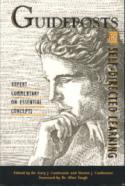

|
|
|
The Learner Autonomy Profile (LAP)
HRDE has developed and validated a comprehensive inventory that provides a precise understanding of an individual’s level of autonomy. Completion of the tool yields information that can be used to increase reliance on strengths and provides strategies to overcome weaknesses related to learner autonomy.
The LAP measures four dimensions of learner autonomy: desire, resourcefulness, initiative and persistence. A profile is provided for each dimension; all four must be completed to produce the full profile.
Inventory of Learner Desire: Identifies the individual’s view of their own willingness and ability to undertake a learning activity and make changes in their behaviors to initiate learning something new. Inventory of Learner Resourcefulness: Assesses the individual’s perception of their ability to mobilize their own as well as other resources necessary to define and engage in a learning activity. Inventory of Learner Initiative: Identifies the individual’s view of their own intention to actually undertake learning activities, their perceived capacity to move from planning to actually engaging in activities to learn something new. Inventory of Learner Persistence: Assesses the individual’s belief of their ability to continue with a learning activity until personally satisfied that they have achieved their desired learning goal. What is Learner Autonomy?Learner autonomy is the capacity to recognize a learning opportunity and the ability and willingness to participate in learning experiences either independently or with others. An autonomous learner makes efficient and best use of personal resources and the resources of others to identify, plan, execute and evaluate their own learning experiences. What the Research Tells UsThe ability to engage in an autonomous learning activity is driven by a combination of factors: a need to know something new, a sense of confidence as a learner (I can do this) and a belief that there will be sufficient payoff to make it worth the time and effort necessary. Functional Learner Autonomy: optimizes learning process via efficient and appropriate use of personal and others’ resources. Leverages self and others to identify, execute and assess the benefits of a learning experience. Extreme Dependence: requires substantial direction to engage in learning. Struggles to identify opportunities; unable to identify/engage resources; may abandon the project when support is unavailable or withdrawn. Extreme Independence: fails to utilize resources or guidance, relying entirely on self. Does not include others in designing, executing or determining the value of the learning activity. Page 1 Page 2 |

|
|
|